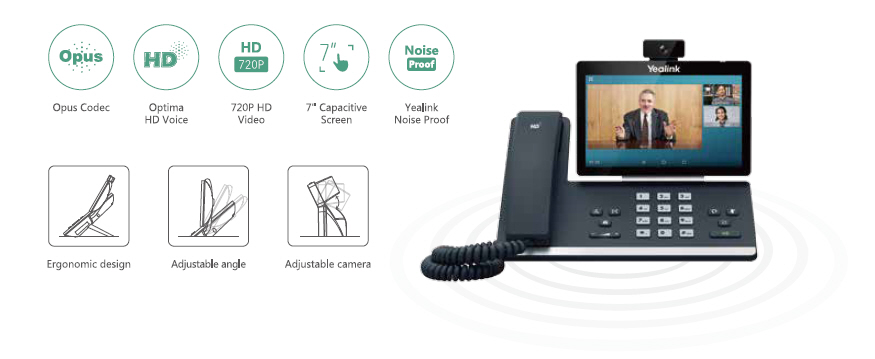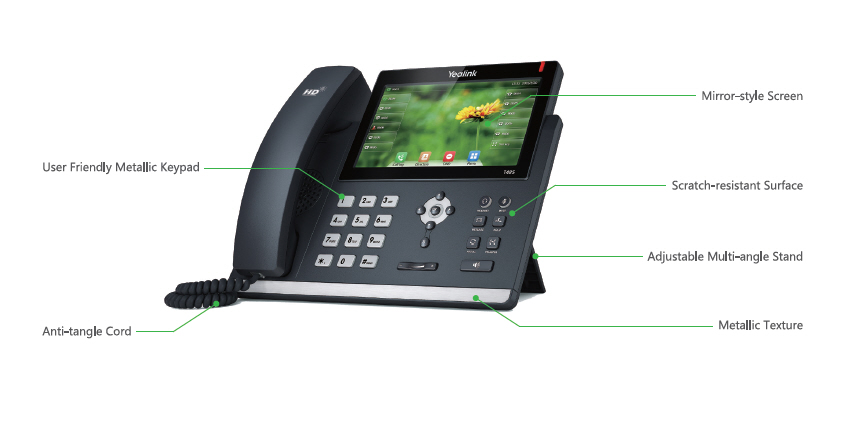Introduction
In recent years, businesses have been confronted with a plethora of choices when it comes to communication systems. One of the most significant developments in this realm has been the rise of VoIP (Voice over Internet Protocol) phone systems. This innovative technology allows users to make voice calls using the internet rather than traditional telephone lines. With numerous advantages such as cost-effectiveness, scalability, and advanced features, many organizations are reconsidering their reliance on traditional telephony. In this comprehensive article, we'll delve into a detailed comparison between VoIP phone systems and traditional telephony, focusing specifically on cost implications.
VoIP Phone Systems: A Cost Comparison with Traditional Telephony
When evaluating VoIP phone systems against traditional telephony, one of the primary considerations is cost. Traditional telephone services often come with high monthly fees and additional charges for long-distance calls. In contrast, VoIP phone systems tend to offer more competitive pricing due to their reliance on internet infrastructure rather than dedicated phone lines.
Understanding Traditional Telephony Costs
Traditional telephony has been the norm for decades and entails costs that can accumulate quickly. Let's break down some of these expenses:
Monthly Line Rentals: Most providers charge a monthly fee for each line. Long-Distance Charges: Calls made outside local exchanges often attract hefty fees. Equipment Costs: Businesses may need expensive PBX systems or multiple handsets. Maintenance Fees: Regular maintenance and upgrades can add to operational costs. Hidden Fees: Many providers include additional charges that may not be immediately apparent.Breaking Down VoIP Phone System Costs
VoIP phone systems present a different financial landscape:
Lower Monthly Fees: VoIP providers typically offer flat-rate pricing plans that cover unlimited local and long-distance calling. No Additional Hardware Required: Most businesses can use existing internet connections without needing extensive equipment changes. Reduced Maintenance Costs: Cloud-based solutions mean less on-site hardware and fewer maintenance requirements. Scalability without Extra Costs: Adding new lines or features is generally easier and cheaper compared to traditional systems. Transparent Pricing Models: Most VoIP providers lay out all costs upfront, making budgeting simpler.Feature Comparison Between VoIP and Traditional Systems
While cost is crucial, it's also essential to consider features when comparing these two options.
Advanced Features in VoIP Phone Systems
- Call Forwarding: Easily redirect calls to other numbers or devices. Voicemail-to-Email: Receive voicemail messages directly in your email inbox for convenience. Video Conferencing: Conduct meetings through integrated video capabilities without needing separate software. Mobile Integration: Use your business number from mobile devices while maintaining connectivity.
Features Often Lacking in Traditional Telephony
- Limited functionality with basic call handling features like call waiting or forwarding. Remote access typically requires additional setup or does not exist at all.
Cost Savings Breakdown
To illustrate the potential savings associated with switching from traditional telephony to VoIP phone systems, let’s look at an example scenario involving a small business:
| Feature | Traditional Telephony | VoIP Phone System | |-------------------------|-----------------------|--------------------| | Monthly Plan Cost | $500 | $200 | | Long-Distance Charges | $300 (variable) | Included | | Equipment Maintenance | $150 | Minimal/None | | Total Monthly Cost | $950 | $200 |

As demonstrated in this table, moving to a VoIP system could save businesses upwards of $750 per month!
The Role of Internet Bandwidth in Voice Quality
One common concern about adopting VoIP technology pertains to voice quality and reliability, which can be affected by internet bandwidth:
What Bandwidth Do You Need?
The amount of bandwidth needed depends on several factors:
- Number of concurrent calls Audio quality preference Internet speed
Generally speaking, 100 kbps per call should suffice for standard voice quality; however, higher-quality audio may require up to 1 Mbps per call.
Ensuring Quality Service
To ensure optimal performance:
Prioritize network traffic for VoIP calls using Quality of Service (QoS). Invest in a reliable internet service provider capable of sustaining required speeds.Installation Process: Comparing Efforts and Timeframes
Switching from traditional telephony to VoIP can vary significantly in terms of installation timeframes:
Traditional Telephony Installation
Installing traditional phone lines often involves:
- Site surveys Physical wiring Complex setups requiring technician visits
This process can take days or even weeks before full functionality is achieved.
VoIP Phone System Installation
Conversely, installing a VoIP system is generally straightforward:
Sign up with a provider online. Configure settings via an easy-to-use interface. Connect devices through existing internet infrastructure.Most installations can be completed within hours!
Analyzing Long-Term Cost Implications
Let's take a closer look at long-term financial implications when considering both types of systems:
Total Cost Over Five Years
If we analyze the total cost over five years based on our previous example:
| Component | Traditional Telephony (5 years) | VoIP Phone System (5 years) | |-------------------------|-----------------------------------|-------------------------------| | Total Monthly Cost | $57,000 | $12,000 | | Equipment Upgrades | $3,000 | Minimal | | Maintenance | $9,000 | Nearly None | | Total | $69,000 | $12,000 |
With such significant differences over time—over $57K saved—it’s clear that transitioning to a VoIP phone system offers substantial financial benefits.
Evaluating Hidden Fees And Contracts
Hidden fees are another aspect where businesses must tread carefully when choosing their telephone service provider:
Typical Hidden Fees in Traditional Telephony
Businesses often encounter unanticipated charges including:
- Early termination fees Unused minutes bills Taxes and surcharges
These extra costs can accumulate quickly and distort true price comparisons.
VoIP Transparency
Most reputable VoIP providers pride themselves on transparency regarding their pricing structures:
Clear contracts without hidden fees Flat-rate pricing models that simplify budgetingBy opting for a trustworthy provider with clear policies about costs upfront ensures no nasty surprises down the line!

Flexibility & Mobility Considerations
In today's fast-paced business environment, flexibility is paramount—especially concerning workforce mobility:
Traditional Phones Limitations
Traditional systems tie users to their physical locations due to reliance on landlines; remote work arrangements become cumbersome if employees can't access their business lines easily.
VoIP’s Advantages For Mobile Workers
On the other hand:
Employees can easily use mobile apps linked to their office numbers from anywhere globally where there’s an internet connection! This flexibility enhances productivity while ensuring seamless communication channels remain open regardless of location.Impact Of Customer Support On Overall Satisfaction
While focusing primarily on costs is important—one cannot overlook customer support quality when selecting any service provider:
Support Challenges With Traditional Providers
Many businesses report slow response times when seeking assistance from traditional carriers leading sometimes frustrating experiences during critical moments requiring immediate help!
VoIPs Proactive Approach To Customer Care
VoIP companies often prioritize robust customer support frameworks designed around user accessibility:
Live Chat Options Extensive Knowledge Bases 3 .24/7 Assistance Availability
Such features empower users by ensuring they receive timely answers whenever questions arise!
Frequently Asked Questions About VoIP Phone Systems vs Traditional Telephony
What is a VoIP Phone System?
A VoIP phone system uses the internet instead of traditional telephone lines for voice communication enabling cost-effective calling options along with advanced features unavailable through standard phones.
How much does it typically cost?
Costs vary based on provider preferences but average monthly charges usually range anywhere between $20-$50 per line depending upon included services offered by each vendor involved!
Is there any equipment needed?
Most people simply require an IP-enabled device such as smartphones/tablets/computers equipped with compatible software while others may prefer dedicated desk phones designed specifically designed around this technology!
Can I keep my current number?
Yes! Most reputable providers offer porting services allowing customers’ existing numbers seamlessly transferred into new accounts eliminating disruption during transitions between different platforms altogether!
What happens if my internet goes down?
Without question—you will still lose access until service resumes! However—many modern solutions provide backup contingencies utilizing cellular networks ensuring uninterrupted connectivity remains available whenever possible!
Are there any contracts involved?
While some vendors do provide contract commitments—others adopt month-to-month billing methods allowing customers greater flexibility without being locked into longer agreements unless they choose so willingly themselves!

Conclusion
In summary—when weighing options between costly legacy solutions versus dynamic state-of-the-art alternatives offered via contemporary Voice over Internet Protocol offerings—the financial advantages alongside feature-rich capabilities become abundantly clear! Transitioning towards utilizing cutting-edge technology promises enhanced value while equipping organizations better prepared adapting swiftly changing market demands moving forward!
Whether your business needs scalable solutions tailored specifically catering diverse team dynamics prioritizing efficiency above https://pastelink.net/2dawqj0p all else—embracing innovations surrounding modern-day telecommunications represents sound investments worth pursuing wholeheartedly!